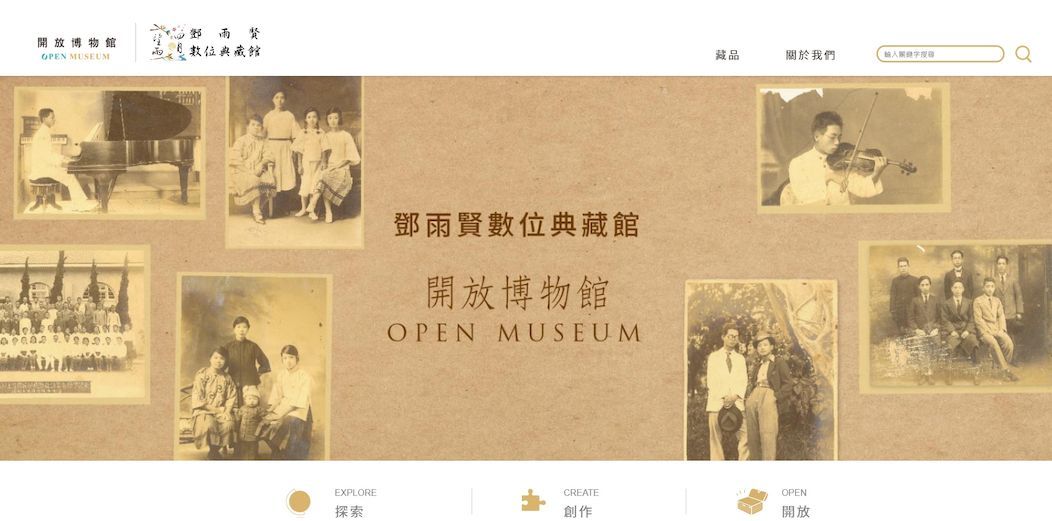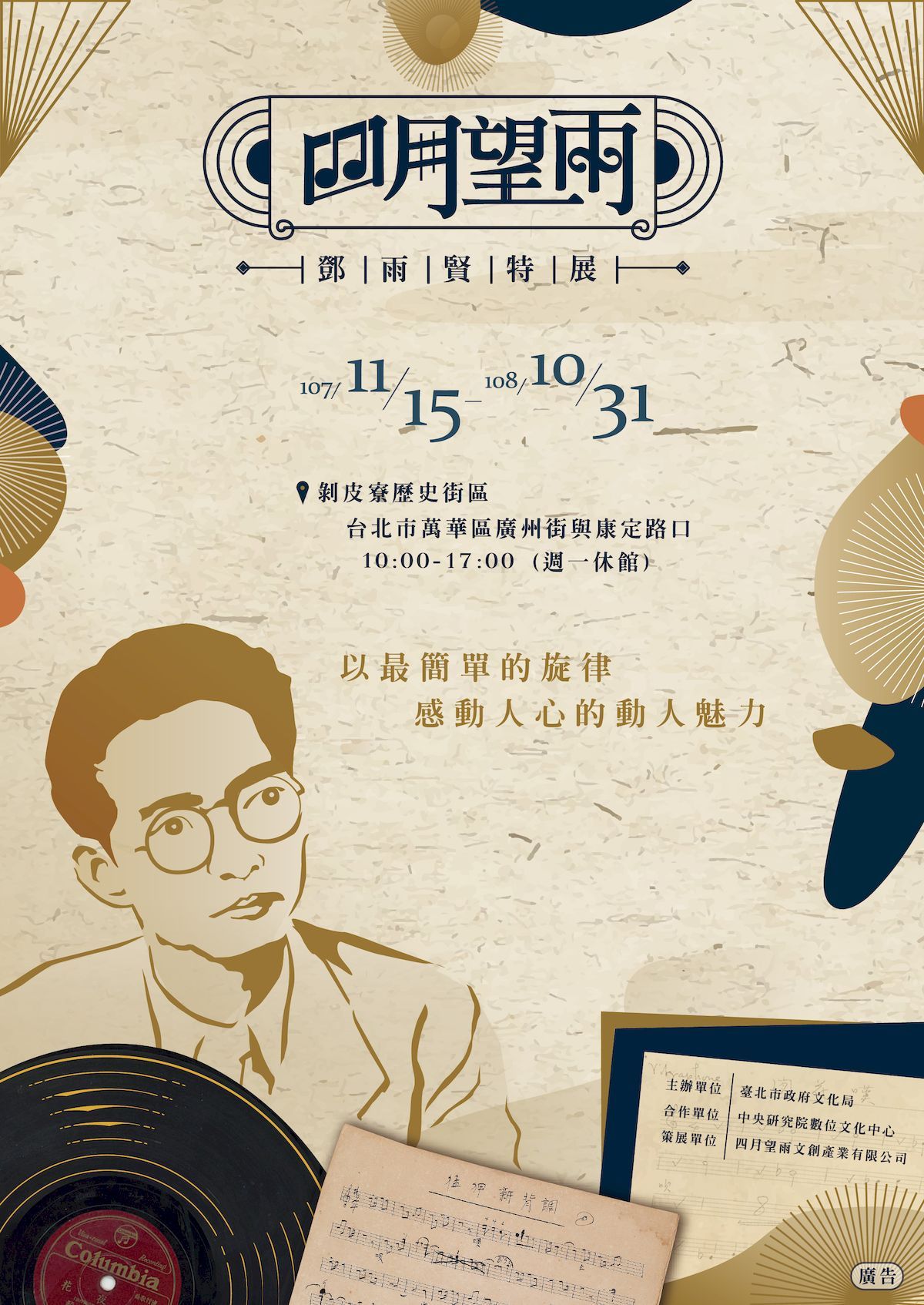
獨夜無伴守燈下,
冷風對面吹,
十七八歲未出嫁,
見著少年家
"At night I wait alone beside a lamp,
With cold wind blowing on my cheeks.
I am seventeen going on eighteen;
Unmarried, I see a young lad."
So begins "Bang Tshunhong" (望春風, "Thirst for Love"), a household song sung across Taiwan. It voices the romantic anticipations of a young lady who cannot express her feelings freely and openly. It is also one of the signatures of Deng Yu-shian (1906-1944), a musician well-known in the country.
Today, an exhibit titled "Si Yue Wang Yu: Deng Yu Shian" opens in the Bopiliao area, Taipei with a press conference held by the Department of Cultural Affairs, Taipei City Government in homage to the musician. In accordance with this, the Deng Yu Shian Digital Archives go online today as an Open Museum project jointly carried out by Deng's grandson Deng Tai-chiao and ASCDC.
Born in Taoyuan, Deng's talent gained recognition with "March of the Daitotei" (大稻埕行進曲) when he was 26. Columbia, the major record company at that time, enlisted Deng as one of the company's contract composers, producing dozens of big hits including "Sukui Ang" (四季紅, "Four Seasons Love"), "Guatia Tshiu" (月夜愁, "Moonlight Sorrow"), "Bang Tshunhong," and "Uia Hue" (雨夜花, "Rainy Night Flower") within only a decade. The four songs are known as "Si Yue Wang Yu" in mandarin, representing the initial characters of the title of the pieces. They convey a simple yet graceful musical pathos and have been interpreted by numberless attempts since their creation.
The Internet seems to make Deng's work and information about Deng ubiquitous, however disorderly the whole body of data would seem. The Deng Yu Shian Digital Archives present Deng's photographs, score manuscripts, and recordings of different versions of the melody of his songs generously provided by Deng Tai-chiao. Not only is the precious shellac disc recording of Deng now available online, but also the exclusive midi files.
Open Museum instigated data cleansing and correction, set up the metadata, and labeled the archives' content as Creative Commons, such that people can approach to the life and work of Deng with high-quality materials at hand. The Deng Yu Shian Digital Archives will continue importing adapted works of Deng and curating online exhibits.
"Si Yue Wang Yu: Deng Yu Shian" is now open until October 31, 2019. The exhibit displays Deng's score manuscripts and shellac disc recordings, as well as features two installations involving AR and virtual video manipulation, allowing the audience to sample Taiwanese songs in a different way in making use of cutting-edge technology.
Deng lived a brief but brilliant life. Open Museum seeks to track the master's life trajectory through important dots that define his timeless achievements, welcoming people's (re-)visit from generation to generation.
The exhibit "Si Yue Wang Yu: Deng Yu Shian" provides a special section for the audience to browse the Digital Archives of Deng Yu Shian.From left to right: Hsu Cheng-hsin, project manager of the ASCDC; Li Li-ju, deputy director of the Department of Cultural Affairs, Taipei City Government; Chen Li-hui, councilor of Taipei City Council; Chen Chin-jun, deputy mayor of Taipei City; musician; representative; Deng Tai-chiao, grandson of Deng Yu-shian.Deng Tai-chiao, Chen Chin-jun, and guests singing "Bang Tshunhong" together.With the AR installation, one can access to the musical recording and related documents by scanning the QR code and downloading an app called "Siyuewangyu."An installation featuring virtual images.Some of Deng's manuscripts of musical notes and shellac discs on display.Works of Chen Chi-shan, a calligraphist from Tainan.Manga art inspired by the life and work of Deng."Si Yue Wang Yu: Deng Yu Shian" will be on display until October 31, 2019.

Note to the translation:
The songs written by Deng cited in this article are shown in the following order: the romanization for Taiwanese, the Chinese title, and the English translation provided by Mr Deng Tai-chiao.